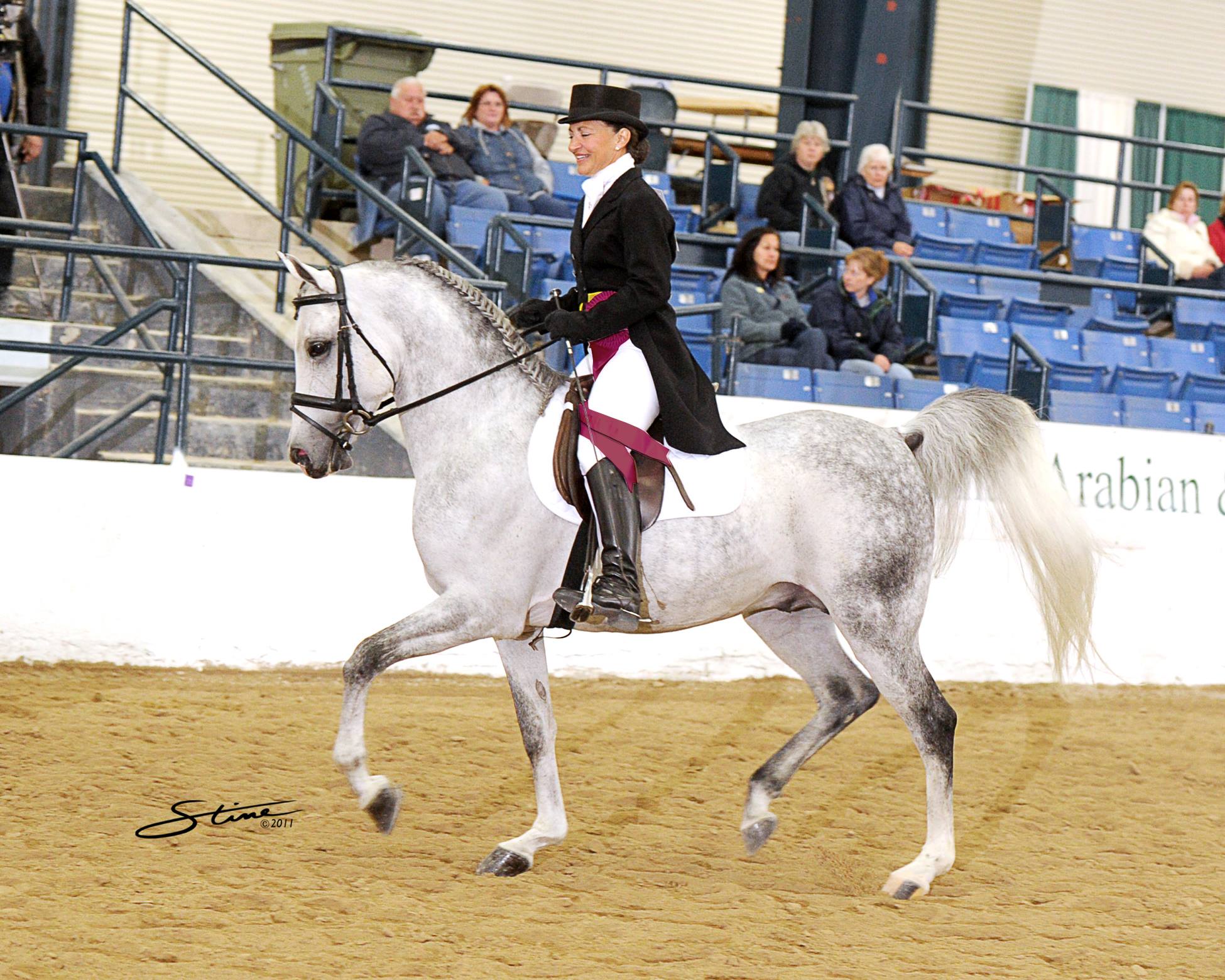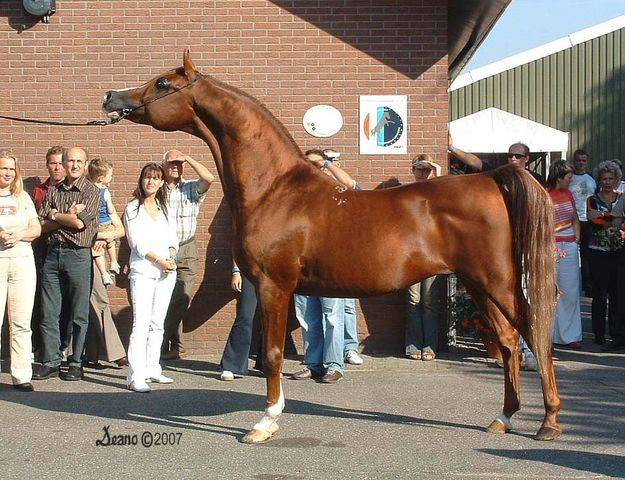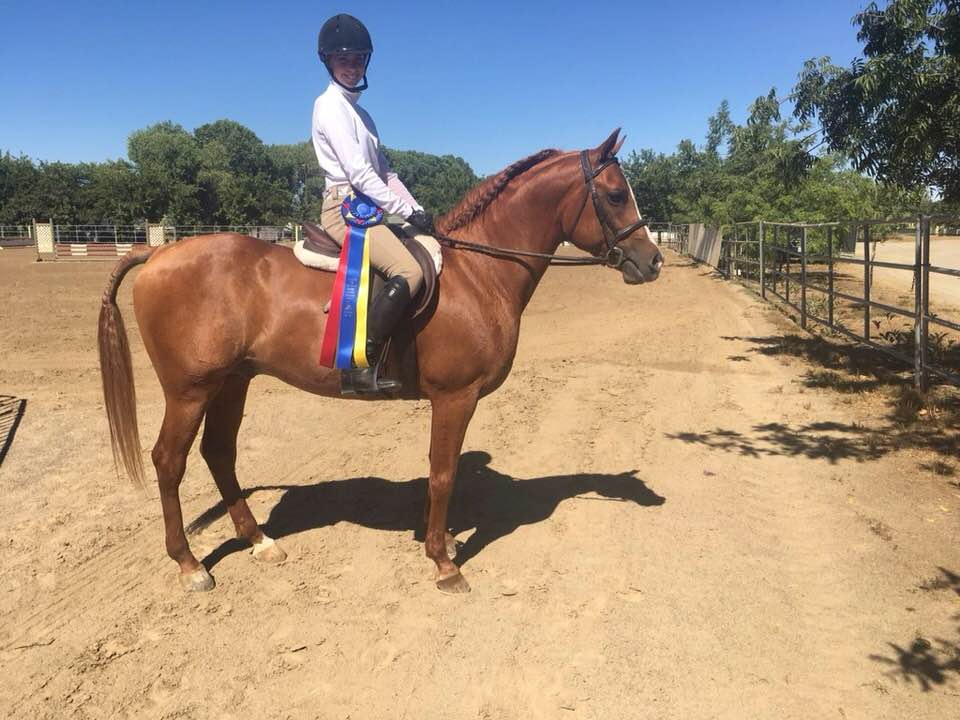For my second blog, I am publishing an article for which I was interviewed by Emma Doherty in 2018 on the subject of genetic diversity, something we are fast losing in the Arabian breed in this era of specialization. I have added a bit of information to it but the wording here is basically hers, and brilliant it is! We often hear the words Genetic Diversity and Outcross used, but what do they mean? What real life implications do they have for us as breeders and custodians of our Arabian horse? There is a real need to increase the genetic diversity of the Arabian gene pool through the incorporation of a myriad of bloodlines.
Genetic diversity is described by the United Nations as "The variation in the amount of genetic information within and among individuals of a population, a species, or a community". In our Arabian horses, when we discuss genetic diversity, what we are usually considering is the individual's level of variance away from 'popular', and subsequently very common, bloodlines.
Well known Arabian horse enthusiast, breed historian, and pedigree expert Arlene Magid is no stranger to genetics. A life-long Arabian horse lover, Arlene has conducted pedigree research around the world, written for various prestigious publications, and helped many owners and breeders learn more about the heritage of their horses. Speaking about the state of today's gene pool, Arlene shares, "In recent years (since the turn of the millennium) we have had a huge decline in genetic diversity in the Arabian horse in North America."
With the rise of social media, and increased advances in artificial insemination and shipping services, it is easier than ever for mare owners to breed to the stallion of their choosing, regardless of geography. Many breeders select stallions of popular bloodlines, resulting in more and more of our Arabian horses sharing a rapidly narrowing gene pool. Arlene explains this narrowing further, "There are a number of factors involved. They include predominance of certain bloodlines that produce the "look" considered desirable for Main Ring Halter competition, to old established breeders ceasing operations or scaling back their involvement."
Genetic diversity is important in any species. While linebreeding, or selecting a certain subset of bloodlines to achieve a popular look can provide the phenotypic, or physical, advantage a breeder is looking for in a certain foal, it can also have a detrimental effect on our Arabian horse breed as a whole.
The Journal of Mammalogy explains that "Lower (genetic) variation depresses individual fitness, resistance to disease and parasites, and flexibility in coping with environmental challenges. Lower variation decreases mean fitness of populations (population growth rates), resilience, and long-term adaptability."[1] To put this plainly, genetic diversity helps maintain the health of our Arabian horse populace through a varied set of alleles (type of genes) that may offer resistance to diseases and other stressors. By upholding the diversity of our gene pool, we as breeders can give the population of Arabian horses the flexibility to adapt, and help avoid the issues that arise with inbreeding.
Arlene explains, "It is mission critical that genetic diversity is a prime consideration now. With the narrowing of the North American gene pool we are seeing conformational faults become commonplace that were once rare, and these faults impede athletic ability. In addition, we are also seeing less desirable traits, like blue eyes, occuring more often than in the past. Some breeders seek to conceal blue eyed horses by not registering them, but the genes are still there in the parents and may be carried forward in dark eyed registered offspring. I recently dealt with a case of a breeder who got a blue eyed foal by a well known show stallion whose owners did not care about him siring this fault which would eliminate any get who have it from main ring halter competition. I see so many more leg issues than I did years ago because the lines that produce this issues are popular. These faults include club feet and offset cannon bones. Horses with club feet have to have a lot of effort made to stay sound in competition. Offset cannons cause torque on the knee joint and tendons which can lead to permanent unsoundness. Another defect that has become quite common is sickle hocks, which make a horse unable to use his hind end properly-many horses with these look like their hind legs are in the next county as they trail behind them. Those who are breeding need to understand the conformational issues of certain popular bloodlines and breed away from them. There are many resources on the internet with charts to aid in understanding conformation and I also strongly recommend the books of Dr Deb Bennett who explains conformation in layman's terms with illustrations to aid in understanding.
How do we combat the narrowing of our gene pool? As breeders, we all have our role to play. Many of today's sought after stallions are heavily bred from popular bloodlines, and many of them are beautiful, correct and viable breeding animals. Sometimes, these lines are the best choice for a specific mare. Oftentimes though, breeding choices are being made more and more on the 'brand name' or a perceived ability to sell a foal with x,y, or z in its pedigree. By looking closely at our mares, and digging a little deeper into their heritage, as well as studying conformation, we can thoughtfully select a stallion who is complementary to the mare and has the best chance of producing a foal as close to breed standard as possible, even if that means stepping away from today's popular bloodlines. Outcross stallions usually carry none of the 'popular' bloodlines, and can provide a boost in genetic diversity for an individual breeding program and the breed as a whole. It is interesting to note that many of the most successful Arabian competitors in endurance, sport horse and working western disciplines are of lines quite different to the "popular" ones.
One avenue of exploring pedigree is through Arlene's services. Everyone has the opportunity to obtain advice on breeding pairings, in depth pedigree analysis, and information on the heritage of their breeding stock. You can find out more about Arlene and her work by visiting her website, www.arlenemagid.com. [1] Journal of Mammalogy, Volume 78, Issue 2, 21 May 1997, Pages 320-335 | 
|
© 2017 Arlene Magid All rights reserved Web Site Design by Hired Hand Design















